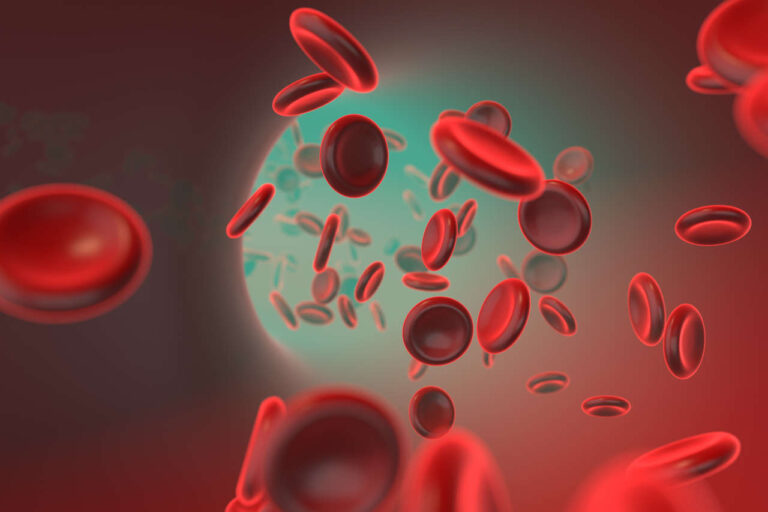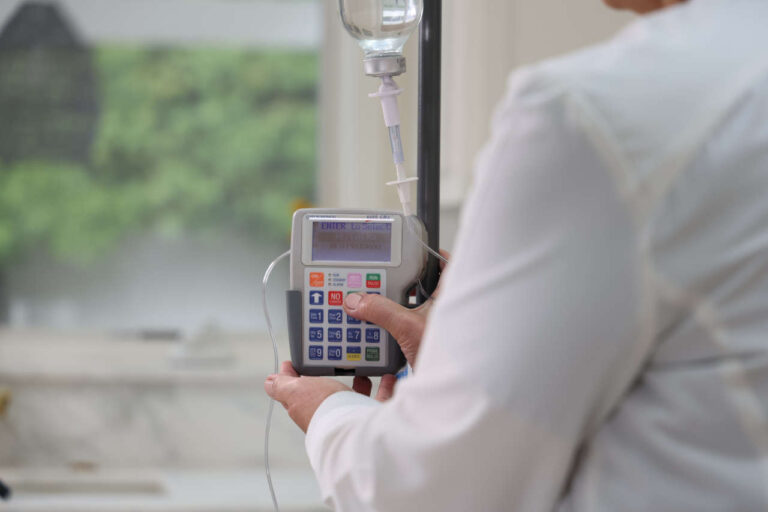
Trong vài thập kỷ qua, những tiến bộ y học đã mang lại nhiều phương pháp điều trị khác nhau cho những người mắc chứng rối loạn suy giảm miễn dịch. Globulin miễn dịch tiêm tĩnh mạch (IVIG) thường là phương pháp điều trị tiêu chuẩn được kê đơn cho những người mắc các bệnh lý như vậy. Tuy nhiên, với những tiến bộ khoa học đang diễn ra, immunoglobulin dưới da (SCIG) đã nổi lên như một giải pháp thay thế. Trong bài viết này, chúng tôi sẽ khám phá những thông tin quan trọng bạn cần biết nếu đang cân nhắc chuyển từ IVIG sang SCIG như một lựa chọn điều trị cho chứng rối loạn suy giảm miễn dịch của mình.
Truyền dịch tại nhà – Chúng tôi đến với bạn
IVIG và SCIG là gì?
Bệnh suy giảm miễn dịch nguyên phát (PIDD) là một nhóm hơn 300 rối loạn xảy ra khi khả năng sản xuất kháng thể của cơ thể bị suy giảm vì một lý do chưa rõ. Kháng thể là những protein quan trọng giúp bảo vệ cơ thể chống lại các tác nhân gây hại như virus và vi khuẩn. Do đó, những người mắc PIDD dễ bị nhiễm trùng và các bệnh lý khác hơn [1]. Đối với những người này, liệu pháp thay thế immunoglobulin (IG) là một lựa chọn điều trị hiệu quả giúp hỗ trợ và duy trì hệ thống miễn dịch khỏe mạnh.
Immunoglobulin tiêm tĩnh mạch (IVIG) là liệu pháp thay thế immunoglobulin (IG) được sản xuất từ huyết tương của hàng ngàn người hiến tặng. Nó chứa nhiều kháng thể giúp chống lại virus và vi khuẩn. IVIG được tiêm tĩnh mạch. IVIG có thể giúp điều trị nhiều tình trạng sức khỏe khác nhau như PIDD, Viêm đa dây thần kinh mất myelin mạn tính (CIDP)và bệnh Kawasaki.
Immunoglobulin dưới da (SCIG) chứa cùng một sản phẩm immunoglobulin (IG), nhưng điểm khác biệt là bạn được tiêm SCIG dưới da thay vì tiêm tĩnh mạch. Phương pháp truyền này cho phép bạn tự truyền tại nhà, linh hoạt hơn so với IVIG.
Lợi ích của việc chuyển từ IVIG sang SCIG
Có một số lợi ích của SCIG so với IVIG [2]:
Chất lượng cuộc sống được cải thiện: Không giống như IVIG, bạn có thể tự dùng SCIG tại nhà. Điều này giúp giảm đáng kể số lần đến phòng khám. Thời gian truyền cũng giảm xuống còn khoảng 1,5 giờ, trong khi phác đồ IVIG thông thường có thể mất đến 4 đến 6 giờ. Không giống như IVIG, lịch trình dùng thuốc SCIG thường xuyên giúp cơ thể bạn duy trì ổn định. globulin miễn dịch Điều này giúp giảm nguy cơ nhiễm trùng và cải thiện sức khỏe tổng thể. Sự tiện lợi của việc tự truyền trong thời gian ngắn hơn và đạt được nồng độ thuốc ổn định có thể cải thiện đáng kể chất lượng cuộc sống của bạn.
Giảm nguy cơ tác dụng phụ: SCIG được dung nạp tốt và có nguy cơ gây tác dụng phụ thấp hơn IVIG.
Giảm chi phí chăm sóc sức khỏe: Việc sử dụng SCIG có thể giúp giảm số lần đến bệnh viện do thuốc dễ dung nạp và thời gian điều dưỡng ngắn hơn, đồng thời giúp bệnh nhân học cách tự truyền.
Sở thích của bệnh nhân lớn hơn: Mọi người có xu hướng thích SCIG hơn IVIG. Trong một nghiên cứu lâm sàng, 81% bệnh nhân thích SCIG hơn IVIG [3]. Trong một nghiên cứu khác, bảy trong số tám bệnh nhân thích SCIG hơn IVIG [4].
Nói chuyện với một chuyên gia
Về Trợ cấp đồng thanh toánCác bước chuyển từ IVIG sang SCIG

Nếu bạn đang cân nhắc chuyển từ IVIG sang SCIG, các bước được khuyến nghị sẽ được thảo luận bên dưới [2][5][6]:
Tham khảo ý kiến của nhà cung cấp dịch vụ chăm sóc sức khỏe: Bước đầu tiên trong quá trình chuyển đổi là tham khảo ý kiến bác sĩ. Bác sĩ sẽ kiểm tra hồ sơ bệnh án, nhu cầu chuyển đổi của bạn, cũng như những lợi ích và thách thức tiềm ẩn của quá trình chuyển đổi.
Tính liều lượng SCIG: Bạn cần một phác đồ điều trị cá nhân hóa phù hợp với mình. Bác sĩ sẽ tính toán liều SCIG phù hợp cho bạn. Bạn nên tiêm liều SCIG đầu tiên một tuần sau liều IVIG cuối cùng.
Nhận vật tư: Nhà thuốc sẽ cung cấp máy bơm và dụng cụ truyền dịch.
Nhận đào tạo: Bạn cần được đào tạo bài bản nếu muốn tự truyền SCIG. Chuyên gia chăm sóc sức khỏe sẽ hướng dẫn bạn cách chuẩn bị truyền, cách đưa kim tiêm vào và cách ghi chép nhật ký truyền dịch.
Giám sát và điều chỉnh: Bạn nên được bác sĩ theo dõi thường xuyên để kiểm tra hiệu quả của SCIG và các tác dụng phụ. Bác sĩ cũng có thể điều chỉnh liều dùng cho bạn nếu cần.
Phần kết luận
Việc chuyển từ IVIG sang SCIG có thể mang lại những lợi ích như cải thiện chất lượng cuộc sống, tăng tính linh hoạt và giảm tác dụng phụ. Một số nghiên cứu đã chỉ ra rằng bệnh nhân dùng SCIG có mức độ hài lòng cao hơn với phương pháp điều trị so với bệnh nhân dùng IVIG. Tuy nhiên, việc chuyển sang SCIG cũng đòi hỏi phải lập kế hoạch cẩn thận, đào tạo bài bản và theo dõi thường xuyên.
Nếu bạn muốn chuyển từ IVIG sang SCIG, bạn nên thảo luận chi tiết với bác sĩ về tất cả ưu và nhược điểm và nhận được một kế hoạch điều trị cá nhân hóa. Với phương pháp tiếp cận phù hợp, SCIG có thể là một lựa chọn thay thế khả thi và được ưa chuộng hơn IVIG.
TÀI LIỆU THAM KHẢO:
- Định nghĩa về Bệnh suy giảm miễn dịch nguyên phát (PIDD) | AAAAI. (nd). https://www.aaaai.org/tools-for-the-public/allergy,-asthma-immunology-glossary/primary-immunodeficiency-diseases-(pidd)-defined
- Menon, D., Sarpong, E., & Bril, V. (2021). Các khía cạnh thực tiễn của việc chuyển đổi từ liệu pháp immunoglobulin tĩnh mạch sang tiêm dưới da trong các rối loạn thần kinh cơ. Tạp chí Khoa học Thần kinh Canada / Tạp chí Canadien Des Sciences Neurologiques, 49(2), 161–167. https://doi.org/10.1017/cjn.2021.56
- Nicolay, U., Kiessling, P., Berger, M., Gupta, S., Yel, L., Roifman, CM, Gardulf, A., Eichmann, F., Haag, S., Massion, C., & Ochs, HD (2006). Chất lượng cuộc sống liên quan đến sức khỏe và sự hài lòng về điều trị ở bệnh nhân Bắc Mỹ mắc các bệnh suy giảm miễn dịch nguyên phát được tự tiêm IgG dưới da tại nhà. Tạp chí Miễn dịch học Lâm sàng, 26(1), 65–72. https://doi.org/10.1007/s10875-006-8905-x
- Hadden, RDM, & Marreno, F. (2014). Chuyển từ immunoglobulin tĩnh mạch sang tiêm dưới da trong CIDP và MMN: cải thiện khả năng dung nạp và sự hài lòng của bệnh nhân. Những tiến bộ điều trị trong các rối loạn thần kinh, 8(1), 14–19. https://doi.org/10.1177/1756285614563056
- Hadden, RDM, & Marreno, F. (2014). Chuyển từ immunoglobulin tĩnh mạch sang tiêm dưới da trong CIDP và MMN: cải thiện khả năng dung nạp và sự hài lòng của bệnh nhân. Những tiến bộ điều trị trong các rối loạn thần kinh, 8(1), 14–19. https://doi.org/10.1177/1756285614563056
- Menon, D., Sarpong, E., & Bril, V. (2021). Các khía cạnh thực tiễn của việc chuyển đổi từ liệu pháp immunoglobulin tĩnh mạch sang tiêm dưới da trong các rối loạn thần kinh cơ. Tạp chí Khoa học Thần kinh Canada / Tạp chí Canadien Des Sciences Neurologiques, 49(2), 161–167. https://doi.org/10.1017/cjn.2021.56













